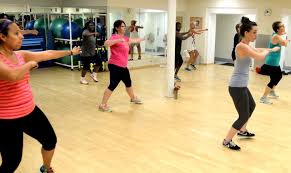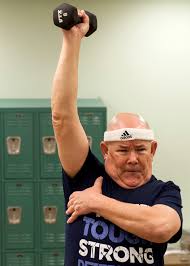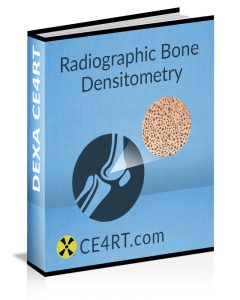Bone Health Exercise Programs for Children, Adolescents, Adults, and the Elderly

People of all ages need bone health exercise programs. How much exercise do children, adolescents, young adults, and elderly individuals need? Read on to find out.
How Much Physical Activity Do You Need for Healthy Bones?
Regular bone health exercise programs are vital to maintain the skeleton. A healthy physical activity regimen consists of at least 60 minutes of moderate physical exercise for children. Adults need at least 30 minutes of moderate physical exercise every day. This regimen should be a combination of different types of activities and exercises. Routine daily activities such as gardening or walking contribute to an individual’s overall physical activity. In addition, less frequent activities such as dancing, biking, tennis, swimming, hiking, golf, and weekly aerobic classes can add variety to the exercise regimen.
What Type of Exercise Benefits Bones?
Evidence indicates that the best bone health exercise programs are those that involve loading the skeleton or placing a mechanical stress on the skeleton. Examples of such weightbearing activities include walking, running, hiking, racquet sports (e.g., tennis and squash). Team sports such as basketball and baseball are also included. Other examples are dance, aerobics, and climbing stairs. Doing heavy gardening or yardwork, including pushing a lawnmower, is also weightbearing exercise. Every individual should include one or more of these weightbearing activities in their physical exercise regimen. This will optimize musculoskeletal health.
Evidence also suggests that resistance training and strengthening exercises are good bone health exercise programs. These exercises place a greater mechanical load on bones than routine activities. Examples of strengthening exercises include jumping, lifting weights, and resistance training of the upper and lower limbs. Finally, while weightbearing and strengthening exercises are important to build and maintain bones, balance training is equally important to prevent falls and fractures. This is especially true in older individuals.
General Principles of Physical Exercise for Bone Health
Currently available evidence does not point to any specific bone health exercise programs that are beneficial. Instead, there are a set of fundamental principles that should be modified and applied to the individual. This should be done according to age and physical status. The American College of Sports Medicine has reviewed the below-listed principles. They define the optimum frequency, intensity, duration, and type of physical exercise that is beneficial to people of all ages. The principles listed below should be kept in mind when developing age-specific bone health exercise programs.
- Continued physical activity over a period of time provides a stimulus to bone growth, maintains muscle strength, and benefits the overall health of the individual. Therefore, it is critical for every individual to make a lifelong commitment to exercise.
- Discontinuation of a physical exercise regimen returns the bone mass to the pre-activity level. Compliance with repetitive physical activity programs is low. They are often discontinued due to loss of interest or lack of motivation. Therefore, every individual should try to include a variety of activities in their exercise regimen to improve compliance in the long term.
- Any activity is better than no activity at all. However, it should be noted that only the skeletal sites that are loaded or stressed by particular bone health exercise programs will benefit. In other words, lifting weights with the arms does not benefit bone mass in the hips.
Additional Factors Influencing Bone Health Exercise Programs
Bone mass accrual occurs when bones are stressed to a degree greater than the usual load experienced by them. For instance, standing only places a static load on the bones and does not promote an increase in bone mass.
A complete lack of movement or complete immobility (such as bed rest due to injury or sickness) leads to bone loss. Therefore, daily weightbearing activity is necessary to prevent or reduce bone loss.
Effective bone health exercise programs for most people consists of some physical activity every day. In addition, there should be some weightbearing exercise, strength training, and balance-improving activities at least twice a week.
Types of Activities that Benefit Bone Health
High-impact activities such as skipping and jumping result in a greater increase in bone mass. This is compared to low to moderate-intensity activities such as brisk walking or endurance training. However, endurance activities play an indirect role in bone health. They do this by increasing muscle mass. They also improve muscle strength, coordination, and balance. Endurance bone health exercise programs reduce the risk of falls in elderly individuals. In addition, they are beneficial to the overall health of the individual by preventing diabetes, cardiovascular disease, and obesity.
Evidence suggests that high-impact activities like jumping do not need to be performed for a prolonged duration. In fact, just 5-10 minutes of such load-bearing exercise is sufficient. Adults should start with a small amount of weightbearing activity. This should be gradually increased in duration. In addition, some high-impact activities such as skipping and jumping should be added. Lower impact activities such as brisk walking should be performed for a longer duration (30-45 minutes).
People who have been inactive for a period of time should increase their physical exercise regimen gradually. It is recommended to start with an easier and shorter routine (walking and light weightlifting). They can then progress to increased time and greater intensity. An increment of no more than 10 percent every week is recommended to prevent injury.
Evidence indicates that bone health exercise programs that involve loading the skeleton in a variety of patterns. For example, a combination of aerobics and strength training will increase bone mass more than activities such as running that are repetitive in nature.
Physical Activity for Bone Health in Children and Adolescents
In children above the age of 8, optimum bone health exercise programs should include the following:
- Every child should participate in 60 minutes of continuous moderate-intensity physical exercise on most (if not all) days. This regimen can help build bone mass and maintain a healthy body weight as well as prevent chronic conditions like diabetes and cardiovascular disease.
- High-impact, short, intense physical activities that involve weightbearing should be included. These include jumping, gymnastics, and basketball.
- Weightbearing activities that improve muscle strength should also be a part of every child’s bone health exercise programs. Examples are running, skipping, and hopping. Activities that work both the upper and lower body and all the different muscle groups of the body are preferable. For instance, soccer, cycling, volleyball, basketball, and gymnastics. It should be noted that while swimming is a highly beneficial physical activity that improves many aspects of an individual’s health, it is not a weightbearing activity. Therefore, swimming does not lead to an improvement in bone mass.
Physical Activity for Bone Health in Adults
In adults, optimum bone health exercise programs should include the following:
- Every adult should participate in 30 minutes of continuous moderate-intensity physical exercise on most (if not all) days. This regimen can help maintain bone mass as well as prevent chronic conditions like obesity, diabetes, and cardiovascular disease.
- Adults who can tolerate intense high-impact activities like jumping should include 10 minutes of such activities into their daily exercise regimen, for example, fifty 3-inch jumps every day.
- People who cannot tolerate high-impact activities should include stair climbing and jogging in their exercise routine.
- Ideal bone health exercise programs include progressive weight training of all the muscle groups of the upper and lower body. There should be a gradual increase in the amount of weights lifted. Balance training should also be included in the regimen.
- Periodic recreational sports and activities such as basketball, tennis, and hiking should be included to work out the different muscle groups as well as add variety to the exercise regimen to improve compliance.

Incorporating Exercise Into Daily Life
Adults with busy lifestyles that do not permit dedicated time for exercise can incorporate physical activity into their daily routine and everyday activities. Examples include parking at the farther end of a parking lot, taking the stairs instead of the elevator, and getting off one stop early from public transport to walk the rest of the way. Other lifestyle activities such as gardening, yard work, and raking can be valuable additions to an individual’s physical activity regimen.
Physical Activity for Bone Health in Older Adults
It is extremely important for older adults to engage in regular bone health exercise programs. This is the one activity that alone can improve muscle strength, bone mass, and balance. Physical activity also reduces the risk of fractures, both by making bones stronger and by reducing the risk of falls. In fact, in the elderly, perhaps the biggest advantage of regular physical activity is a reduction in fall risk. The following guidelines should be kept in mind to maximize the benefit of physical activity in terms of fall prevention in the elderly:
- Weak muscles are a known risk factor for falls. Therefore, the physical activity regimen of elderly individuals should be of sufficient intensity to enhance muscle strength and build muscle mass. Resistance training and strengthening exercises are best suited to yield these results, but endurance activities with aerobic exercises can also help to some extent.
- Balance plays a critical role in fall prevention. Improvement in balance is thus a vital component of bone health exercise programs in elderly individuals. Training exercises and Tai-Chi (a form of exercise from China involving gentle flowing movements) are recommended. These activities involve weightbearing and posture control, thereby improving balance and reducing the likelihood of falling.

Frequency of Exercise in Older Individuals
The frequency of physical activity also plays a role in fall prevention. Elderly individuals should engage in exercise on average at least three times a week for 30-45 minutes at a time.
It should be noted that in previously inactive individuals, it takes a minimum of three months for the benefits of exercise to become evident. Furthermore, the physical activity regimen must be continued to maintain the benefits.
Fall Risk in the Elderly
If an elderly person suffers a fall, the healthcare providers caring for them should perform a fall risk assessment including an evaluation of their physical activity program. Physical activity is effective in reducing fall risk as part of a larger, more comprehensive fall prevention strategy.
Physical Activity for People with Osteoporotic Fractures
Certain activities and bone health exercise programs should be avoided by individuals who have already sustained one or more fragility fractures due to osteoporosis. For instance, in someone who has suffered a spine fracture, it may be best to avoid exercises that involve flexion of the spine. The physical activity regimen of people who have suffered osteoporotic fractures should be developed carefully in collaboration with rehabilitation and physical therapy professionals to prevent further injury.
DXA CE
We offer a range of courses for DXA operators and radiologic techs to complete their CE requirements. To earn CEUs recognized by the ARRT® and other registries, please purchase our online courses. These e-courses are an easy way to complete your registration requirements. Our online bone densitometry course will earn you 23 of the required 24 credits in one shot.
Here is more about radiologic technologist ce credits.
